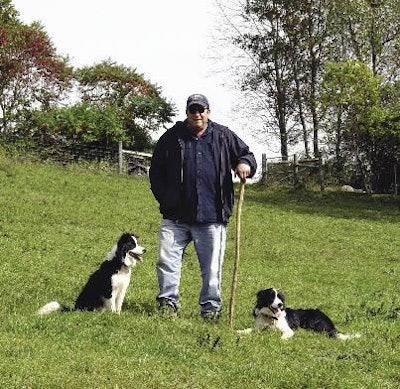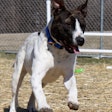
Euthanasia is a leading cause of death for dogs. Often pet owners opt for euthanasia due to their dog's behavior problems. Add to that poor training that results in dogs being hit by cars or otherwise killed and it's clear that improper training is a major killer of dogs. Thus, it is in the petfood industry's best interests to promote good dog (and cat) training. Effective training yields a positive bond and a longer life for dogs.
Which brings me to Jon Katz. A friend loaned me the book A Dog Year by Katz - after that I was hooked on Katz books. I'm now reading Katz on Dogs . The cool thing about Katz is his honesty and philosophy based on his experiences training dogs.
What's the best advice?
Katz makes it clear that he hasn't always been an expert: It was after living with many dogs and especially after adopting Devon, "a demented Border Collie," that he was forced to either learn how to train the frenzied Devon or get rid of him. What Katz stresses is that every dog is different, due to many factors such as breeding, environment and temperament, and therefore, every human-dog relationship varies.
There's plenty of advice about training out there. Use food. Never use food. Use shock collars. Never shock your dog; it's cruel. Be positive, all the time. No, show the dog who's boss. Use clickers and whistles. Use your hands and body. Use a happy, chirpy voice for training. No, whisper. Study the dog's tail and ear positions for clues to its thinking. Tug and jerk. Never tug.
The Katz training approach is an amalgam of ideas and methods, tailored to fit his work, environment and dogs. It asks that we understand ourselves, as well as our dogs. It can incorporate elements of any other theory that works.
Find the right fit
Katz believes that both people and dogs are unique; a Chow differs from a Lab just as a city dweller differs from a farmer, and he points out that such individuality isn't addressed by even the best and most popular training methods. Not every training theory is for everyone, notes Katz, but almost anyone can train a dog and live with it comfortably.
Jon Katz has written 14 books, six novels and eight works of nonfiction. A member of the Association of Pet Dog Trainers, he writes a column about dogs for the online magazine Slate. Katz lives on Bedlam Farm in upstate New York, USA (www.bedlamfarm.com).



.jpg?auto=format%2Ccompress&fit=crop&h=167&q=70&w=250)

.jpg?auto=format%2Ccompress&fit=crop&h=167&q=70&w=250)












